E.T. El extraterrestre
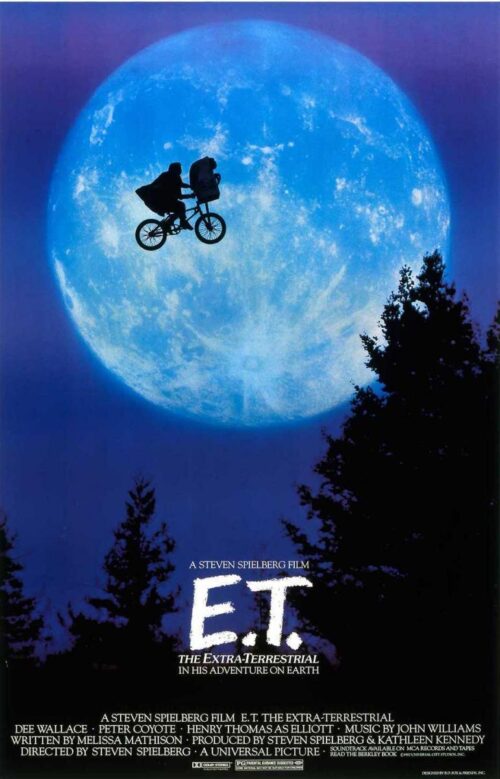

Una aportación importante en mi enfoque proviene de la obra de Alf Hornborg. Hornborg plantea que nuestra concepción de la tecnología invisibiliza su relación con el intercambio desigual de materiales y energía a nivel global. El diseño pulido de nuestros dispositivos tecnológicos (móviles, portátiles, etc.), pero también de las palas eólicas, fomenta esa abstracción respecto a la procedencia de los minerales que los componen y a las condiciones de trabajo que facilitan su extracción en los países del Sur. Si bien esta dinámica extractivista precede a la modernidad industrial, se intensifica con ella. En buena medida, tanto Estética fósil como Cultura fósil tratan de hacer aflorar a la superficie aquello que en la historia de las imágenes y los imaginarios de la modernidad industrial ha tendido a permanecer oculto. Se mueven, por así decirlo, en esa dialéctica entre lo visible y lo invisible. En ambos ensayos también retrotraigo esa dialéctica al contraste entre la diafanidad y la transparencia de los espacios estéticos y culturales para la contemplación (como los museos y los invernaderos de las exposiciones universales) y la suciedad y opacidad de la fábrica fósil, asociada metafóricamente al Infierno del trabajo en los imaginarios del siglo XIX.
Este documento resume las presentaciones de las Jornadas Técnicas sobre el Concurso del Bosque Metropolitano de Madrid. El bosque se propone como una infraestructura verde que mejorará la salud ambiental y social de la ciudad. Los expertos en diferentes disciplinas discutieron cómo diseñar el bosque para fomentar la biodiversidad, conectar espacios verdes, y apoyar prácticas agrícolas y culturales sostenibles que unan la ciudad con el campo.
The OpenAPI Specification (OAS) defines a standard, language-agnostic interface to HTTP APIs which allows both humans and computers to discover and understand the capabilities of the service without access to source code, documentation, or through network traffic inspection. When properly defined, a consumer can understand and interact with the remote service with a minimal amount of implementation logic.
An OpenAPI definition can then be used by documentation generation tools to display the API, code generation tools to generate servers and clients in various programming languages, testing tools, and many other use cases.
Stay up to date with a community-driven list of high-quality, modern tools for OpenAPI. An open source project from APIs You Won’t Hate.
Reflexiones sobre el mundo del software: desde cómo gestionamos nuestro equipo técnico a cómo el movimiento bootstrapper en IndieHackers está influyendo en la industria.
Casos de estudio sobre empresas de software: ¿quieres saber por qué Salesforce organizaba falsas manifestaciones para atacar a sus competidores?
Opiniones (las mías) sobre la industria tecnológica: por qué los bonus por objetivos pervierten muchas empresas o por qué el número de empleados no siempre es un indicador de salud del negocio.
Estrategias para SaaS de las que (solo) quizás puedas aprender: desde cómo aplicar el marketing de contenidos a qué sesgos cognitivos te pueden ayudar a mejorar tus landing pages.
L’envie de faire cet épisode aurait pu naître de la gigantesque panne informatique, la plus massive de l’histoire informatique, qui a eu lieu avant l’été : ces milliers d’ordinateurs qui sont tombés en rade après la mise à jour d’un logiciel de sécurité. C’aurait pu. Mais non.
Dealing with life’s limitations is the theme of Perfect Days…
…we quickly grasp that Hirayama is not unhappy. He lives a highly ritualized existence whose routine we soon come to know: He wakes up, spritzes his plants, looks with pleasure at the morning sky, buys canned coffee from a nearby vending machine and then drives his van off to work playing old music cassettes by the likes of The Kinks, Patti Smith and Otis Redding
React.FC is a type that stands for «Function Component» in React. It is a generic type that allows you to specify the props that a function component will accept.
Using React.FC can be helpful for a number of reasons:
It provides type safety for the props that a component expects to receive. This can help catch bugs early on and make your code easier to understand.
It makes it easier to refactor your component’s props. For example, if you want to rename a prop, the TypeScript compiler will catch any places where that prop is used and help you update them.
It makes it easier to see the expected shape of a component’s props just by looking at its type definition.

FreeTube is a YouTube client for Windows (10 and later), Mac (macOS 10.15 and later), and Linux built around using YouTube more privately. You can enjoy your favorite content and creators without your habits being tracked. All of your user data is stored locally and never sent or published to the internet. FreeTube grabs data by scraping the information it needs (with either local methods or by optionally utilizing the Invidious API). With many features similar to YouTube, FreeTube has become one of the best methods to watch YouTube privately on desktop.
This article will explore GraphQL and WPGraphQL, delving into their core principles, architecture, and how they contrast with the WordPress REST API.
.js is JavaScript, plain and simple
.ts is TypeScript, Microsoft’s way of adding «concrete» types to JavaScript
.jsx is JavaScript but with JSX enabled which is React’s language extension to allow you to write markup directly in code
.tsx is similar to jsx except it’s TypeScript with the JSX language extension

Willie Nelson may be the most important figure in country music history; if he’s not, only Hank Williams matters more. Willie’s also one of the most important musical artists in American history, a first-name-only giant like Elvis and Ella. The contours of the career that brought him to those heights are familiar. There was the huge, early-sixties success writing songs like “Crazy” and “Hello Walls” for big country stars, then the failed attempt to become one himself over the rest of the decade, his talents an ill fit for a stiff Nashville mold. There was his earthy rebirth in Austin in the seventies, when he started playing by his own rules and helped invent the outlaw subgenre that made country cool for a younger, rock-bred audience.
Over-fetching is fetching too much data, meaning there is data in the response you don’t use.
Under-fetching is not having enough data with a call to an endpoint, forcing you to call a second endpoint.
In both cases, they are performance issues: you either use more bandwidth than ideal, or you are making more HTTP requests than ideal.
So, you end up with a compromise between not having too many endpoints, and having the endpoints fit each component needs best. This will lead to over-fetching in some cases (the endpoint will provide more data than needed for one specific component), and under-fetching in some others (you will need to call a second endpoint).
GraphQL fixes this problem because it allows you to request which data you want from the server. You specify what you need and will get this data, and only this data, in one trip to the server.
Google has a new way to power its data centers. According to a blog post from Google, a «first-of-its-kind» geothermal project in Arizona that uses modern oil and gas industry drilling techniques to optimize geothermal power generation is operational, as of today. Google says this «enhanced geothermal energy» is capable of producing round-the-clock clean energy cheaper than any other currently available method.
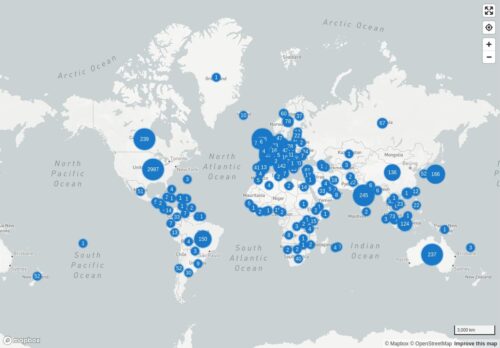
Launched in 2007, Data Center Map was the first research tool of its kind. We operate a global data center database, mapping data center locations worldwide. Our intention is to make it easier for buyers, sellers, investors, regulators and other professionals in the data center industry, to gain insights in to the data center markets of their interest.
We currently have 7945 data centers listed, from 152 countries worldwide. Click on a country below, to explore its data center locations.
Our database contains lists of data center operators and service providers, offering colocation, cloud and connectivity.
¿Qué le parece que se juzguen otras canciones suyas, como ‘Sí, sí’, desde la óptica actual de la híper-literalidad?
Todos debemos intentar luchar contra eso. Creo que el arte debe ser territorio salvaje, sin normas morales ni éticas. Una plasmación gráfica del subconsciente. Y el subconsciente no tiene normas éticas. Por eso no debemos juzgar el arte con las normas morales con las que juzgamos los hechos civiles. Es abstracto por definición, y es estúpido y medieval aplicarle normas referidas al machismo, al feminismo, al racismo, a la violación o a lo que sea. Vaya usted a saber qué quería decir el autor. El arte es precisamente la huida de lo literal. Bastante literal es que te atropelle un coche. Ni los autores sabemos que estamos escribiendo como para juzgarlo moralmente y castigarlo. Es muy peligroso y creo que se está cargando el arte.
# Install new PHP 8.3 packages sudo apt install php8.3 php8.3-cli php8.3-{bz2,curl,mbstring,intl}# Install FPM OR Apache module sudo apt install php8.3-fpm # OR # sudo apt install libapache2-mod-php8.2# On Apache: Enable PHP 8.3 FPM sudo a2enconf php8.3-fpm # When upgrading from an older PHP version: sudo a2disconf php8.2-fpm## Remove old packages sudo apt purge php8.2*
Learn how to create a modal image gallery (lightbox) with CSS and JavaScript.
Since WP 5.3 it is enough to use this function:
wp_get_registered_image_subsizes();
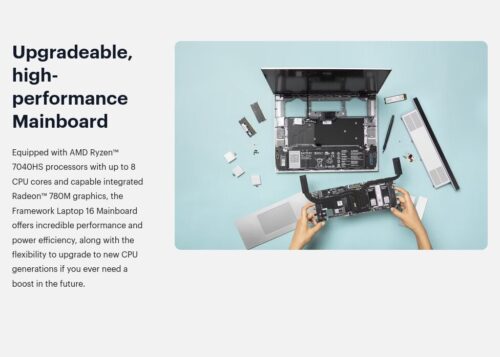
Framework Laptop 13 is a thin, light, fast 13.5” notebook that is simple to customize, upgrade, and repair, so it stays yours for longer.
Removal and disposal of a swollen battery can be dangerous, but leaving a swollen battery inside a device can also cause serious harm. Read all warnings carefully and proceed at your own risk. All batteries are hazardous waste and must be disposed of properly.
Rclone is a command-line program to manage files on cloud storage. It is a feature-rich alternative to cloud vendors’ web storage interfaces. Over 70 cloud storage products support rclone including S3 object stores, business & consumer file storage services, as well as standard transfer protocols.
SQLite es el DBMS más común del mundo, incluido en todos los sistemas operativos populares.
SQLite no tiene servidor.
Para quienes desarrollan, SQLite está integrado directamente en la aplicación.
Para todos los demás, existe una conveniente consola de base de datos (REPL), que se proporciona como un solo archivo (sqlite3.exe en Windows, sqlite3 en Linux / macOS).
1. Avoid var Keyword: A Relic of the Past
Before ES6, the var keyword was the primary way to declare variables. However, it had some quirks and limitations that often led to unexpected results and made debugging more challenging.
In modern JavaScript, we generally avoid using var and instead opt for let and const, which offer more predictable and block-scoped behavior, making your code easier to understand and maintain.
2. let: Variables That Can Change
Use the let keyword to declare variables whose values you might need to change later in your code.
3. const: Constants for Unchanging Values:
If you have a value that shouldn’t change throughout your program, use the const keyword.
A good rule of thumb is to use const by default and only switch to let if you know you’ll need to reassign the variable’s value later.
Is that an unpopular opinion? It’s always been my favorite track on abbey road. You never give me your money, the end and she came in throught the bathroom window are the three tracks from the medley that never get old for me while golden slumbers and carry that weight’s big impact from the first listen diminished greatly in repeated listenings. Same goes for let it be, the song not the album.
In contrast to the White Album and Let It Be, Abbey Road – released in September 1969 – found The Beatles operating relatively cohesively; attempting to pull together, in step with one another if not exactly on the same page. «Abbey Road was really unfinished songs all stuck together,» bemoaned John Lennon. «None of the songs had anything to do with each other, no thread at all.”
It was the final collection of songs The Beatles recorded together…
nmap is a network mapping tool. It works by sending various network messages to the IP addresses in the range we’re going to provide it with it. It can deduce a lot about the device it is probing by judging and interpreting the type of responses it gets.
Let’s kick off a simple scan with nmap. We’re going to use the -sn (scan no port) option. This tells nmap to not probe the ports on the devices for now. It will do a lightweight, quick scan.
Even so, it can take a little time for nmap to run. Of course, the more devices you have on the network, the longer it will take. It does all of its probing and reconnaissance work first and then presents its findings once the first phase is complete. Don’t be surprised when nothing visible happens for a minute or so.
The IP address we’re going to use is the one we obtained using the ip command earlier, but the final number is set to zero. That is the first possible IPAddress on this network. The «/24» tells nmap to scan the entire range of this network. The parameter «192.168.4.0/24» translates as «start at IP address 192.168.4.0 and work right through all IP addresses up to and including 192.168.4.255».
Note we are using sudo.
sudo nmap -sn 192.168.4.0/24
…we’ll show you how to use the command “dmidecode” to get the information about your motherboard, as well as how to use the command “lshw” to get more information about your system
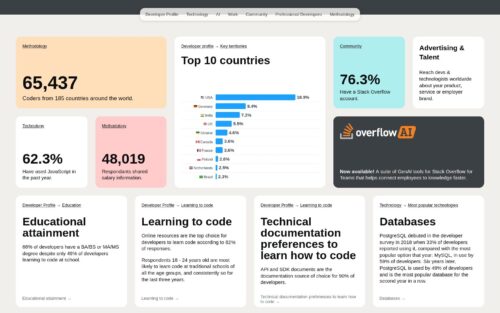
In May 2024, over 65,000 developers responded to our annual survey about coding, the technologies and tools they use and want to learn, AI, and developer experience at work. Check out the results and see what’s new for Stack Overflow users.

It’s more than a movie site and it’s more than baseball.
It’s the feelings that touch you and the memories you recall as you immerse yourself into this field and this farm. Old and young alike – you’ll find yourself grinning from ear to ear as you step onto this magic field in Dyersville, Iowa.
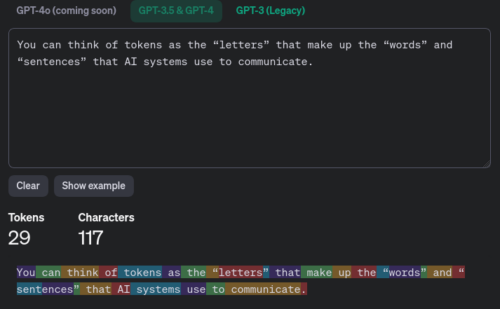
OpenAI’s large language models (sometimes referred to as GPT’s) process text using tokens, which are common sequences of characters found in a set of text. The models learn to understand the statistical relationships between these tokens, and excel at producing the next token in a sequence of tokens.
You can think of tokens as the “letters” that make up the “words” and “sentences” that AI systems use to communicate.
A helpful rule of thumb is that one token generally corresponds to ~4 characters of text for common English text. This translates to roughly ¾ of a word (so 100 tokens ~= 75 words).
The process of breaking text down into tokens is called tokenization. This allows the AI to analyze and “digest” human language into a form it can understand. Tokens become the data used to train, improve, and run the AI systems.
Why Do Tokens Matter? There are two main reasons tokens are important to understand:
Strategies for Managing Tokens
Because tokens are central to how LLMs work, it’s important to learn strategies to make the most of them:
To somewhat expand on the earlier answers here, there are a number of details which are commonly overlooked.
subprocess.run() over subprocess.check_call() and friends over subprocess.call() over subprocess.Popen() over os.system() over os.popen()text=True, aka universal_newlines=True.shell=True or shell=False and how it changes quoting and the availability of shell conveniences.sh and Bash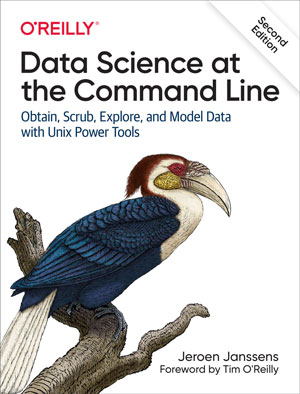
This thoroughly revised guide demonstrates how the flexibility of the command line can help you become a more efficient and productive data scientist. You’ll learn how to combine small yet powerful command-line tools to quickly obtain, scrub, explore, and model your data. To get you started, author Jeroen Janssens provides a Docker image packed with over 100 Unix power tools.
DK: ¿Tú qué piensas de la enseñanza religiosa en los colegios?JMP:
Uf. Hombre, yo es que soy muy tradicional, no en el sentido banal de la palabra, sino que yo me considero parte de una cadena, entonces yo creo que los seres humanos tienen que sentirse partícipes de una comunidad. Y lo que le da sentido a las comunidades en términos históricos es la religión, entonces yo creo que un español debe ser instruido en la religión católica.
DK: Un español musulmán, por ejemplo.JMP:
Un español…
DK: Un español puede ser musulmán, y protestante, y judío… musulmanes y judíos ha habido en España casi más años que católicos, ¿no?JMP:
Sí, pero todo nuestro arte, toda nuestra literatura… todo es católico.
DK: Entonces tú piensas que un español musulmán debería recibir clases de religión católica.JMP:
Sí, pero no en sentido catequético.
DK: Bueno, como se hace ahora en los colegios.JMP:
No, no, pero eso es una lección, un derecho de los padres a elegir la religión en la que desean que sus hijos sean formados.
DK: Ese derecho no existe en la religión musulmana, por ejemplo, mientras que para la católica sí es un derecho efectivo en todos los colegios.JMP:
Sí, pero bueno, también es una religión mayoritaria. Pero bueno, yo la pondría para todo el mundo.
DK: Obligatoria para todo el mundo.JMP:
Sí. Sí. Pero no en términos confesionales, en términos de instrucción, o sea, que la gente sepa qué es la eucaristía, que sepa lo que es la virginidad de María…
DK: Historia de las religiones…JMP:
Pero bueno, es que no es lo mismo.
DK: ¿De verdad crees en serio que está bien que le expliquen al hijo de un musulmán español lo que es la virginidad de la Virgen, la eucaristía y todo eso?JMP:
Sí, porque ese niño podrá leerse un auto sacramental de Calderón de la Barca y entenderlo. O podrá leerse un soneto de Lope de Vega y entenderlo. Es una forma de hacerlo partícipe de una tradición cultural, de una tradición artística, de una tradición… Yo creo que sí. Pero en esto no veamos un deseo de imponer religión o una determinada religión a la gente, no, es deseo de hacerla partícipe de nuestra historia.